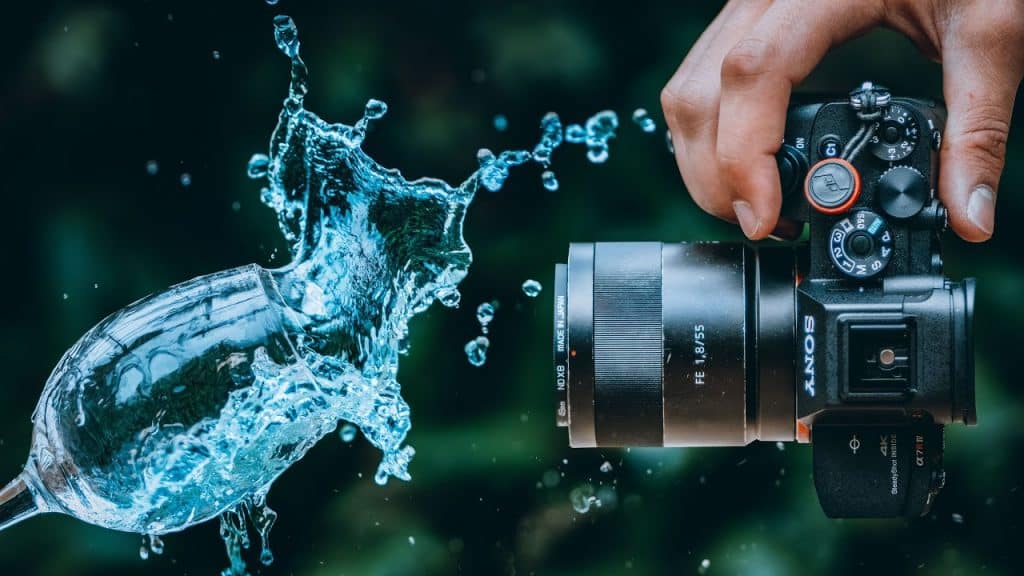Whether you’re an aspiring photographer or interested in starting a new hobby, there are many styles of photography that you can explore. Beauty portrait photography can be a fun and intimate way to highlight a subject’s beauty for commercial or personal purposes.
What Is Beauty Photography?
Beauty photography is a genre of photography that involves shooting close-up images of subjects, highlighting their attractive features for editorial, commercial, or personal purposes. In this genre, photographers use their subjects to convey a certain emotion to the viewer, like happiness, innocence, or seduction, depending on the shoot’s theme. Beauty portraits can be intriguing from an artistic sense or aim to highlight specific products like makeup, skincare, hair accessories, or jewelry.
Beauty Photography Tips

Beauty photographers aim to capture the most beautiful, close-up shots of their subjects. For some tips on how to capture the best beauty images, check out the following tips:
- Choose a confident model. Select a model that possesses confidence, has a strong presence, and the right attitude for the emotions you are trying to capture. The model you choose should be knowledgeable about posing, comfortable in front of the camera, and capable of taking directions and making adjustments as necessary.
- Hire a creative team. In this genre of photography, makeup and hairstyling take center stage, and you should avoid relying on your models to do their own styling. Dedicate a part of your budget to hiring a professional makeup artist and hairstylist that work in beauty photography to prepare your subject. They will know the best products to use and can ensure that your model is primed and ready for your beauty shoot.
- Prepare your gear. Before the shoot, write a list of all the essential equipment you’ll need so that you are ready to go on the day of the shoot. At least a day before your shoot, pack your camera and lighting gear, check off every item on your list as you go, and then place everything together in a visible spot in your home. Bring extra batteries, a tripod, a monopod, bulbs, lenses, gels, and a backup camera, if possible.
- Make a mood board. A mood board is a great tool that helps you organize and plan the visual elements of your shoot. Your mood board can include color palettes, backdrops of varying colors, lighting setups, wardrobe, and other essential components. Share your mood board with the stylists and model so that everyone understands the overall visual aesthetic of the shoot.
- Use the right camera and settings. Beauty photography requires a high-resolution camera and a macro lens. A macro lens is a type of camera lens specifically designed to focus close up to the subject with a 1:1 (life-size) reproduction. Selecting the right camera settings allows you to see the subject’s finer details, from the intricacies of their jewelry to the model’s skin texture. This level of clarity is essential if you’re doing a beauty shoot for skincare products, a jewelry line, or liquid foundation.
- Use the right light source. Beauty lighting can be tricky to nail outdoors, as the natural light frequently changes throughout the day and can prevent you from capturing consistent shots. Set up an indoor space by rearranging an existing room or rent out a studio space where you can control the lighting. Use light modifiers like a beauty dish, which is a tool that redistributes light towards a focal point, creating a contrasted look. A beauty dish establishes a lighting setup that is the midpoint between a direct flash and softbox diffuser lighting, casting shadows that can enhance your subject’s bone structure and other facial features.
- Choose your backdrop. The right backdrop is essential for capturing the most dynamic, flattering photos of your subject. You can choose from solid colors like white, black, and gray, or go bold and use a seamless paper backdrop in colors like pink, orange, purple, or yellow. This non-reflecting paper is cost-effective and packs a visual punch that can take your shots to the next level.
- Take as many photos as possible. The day of the beauty shoot will be hectic, and time is limited, but you must prioritize capturing as many shots as possible. Shoot an array of photos with different lighting, exposures, and positioning to give yourself many options to choose from as you head into post-production.
- Retouch sparingly. When shooting beauty photos, you want your subjects to appear in their most natural, beautiful form. While most professional photographers will retouch their beauty shots, making too many tweaks to an image during post-processing may cause it to look over-edited or unrealistic, which may be an issue for your client. If your initial setup is well-lit and plays to your subject’s strengths, the less photo-retouching you’ll have to do when preparing the final images for your client.

